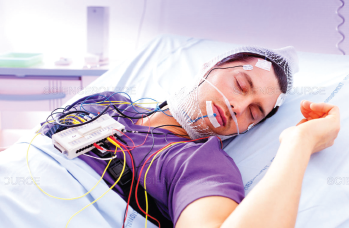

Polysomnography is a sleep study that has to be authorised by a referral from a local GP. Level 2: Polysomnography "PSG" (Home Based Sleep Study) CPAP Titration : this test involves a technologist determining the amount of air pressure that a patient will need for their CPAP so it can be programmed accurately for home use.Multiple Sleep Latency Test : this test measures how quickly a patient falls asleep and how fast they are able to enter REM sleep during a daytime nap, this is used to diagnose excessive sleepiness in the daytime.There are a variety of In Lab sleep studies that can examine potentially harmful sleeping disorders including sleep apnea, narcolepsy or severe sleep disordered breathing. Level 1: In Lab Diagnostic Sleep StudyĪn In Lab Diagnostic Sleep Study involves a patient getting a referral to a medical practioner and is usually performed in a dedicated sleep lab. Different sleep studies are available depending on the severity of an individuals symptoms and is dependent on any known sleep disorders that a person may have. Sleep studies and sleep services collect data about what is occurring in a person's body during their sleep. There are 3 types of sleep studies that can be done in your own home environment or in a dedicated sleep lab depending on which treatment option you are comfortable with. Once you have your results, contact us and we will run through the treatment options with you.īelow is a list of companies that offer sleep studies and are signed off on by an independent sleep physician that has no affiliation with CPAP providers. The first step is to have the sleep study authorised by a doctor this can be done by downloading one of the referral forms below and taking it to your GP, or booking an online Telehealth consultation with a doctor from the comfort of your own home. If you're worried or curious about your own sleep patterns, you can do this quick OSA online sleep quiz to gain more information. A sleep study is the first step for anyone who is struggling with their sleep. If your sleep is being obstructed, you should consider getting a sleep study done to diagnose any existing conditions that may be hindering your sleep and health. What Sleep Disorders Can Sleep Studies Diagnose? During a sleep study, disruptions to a patient's sleep will be noted including eye movements, blood oxygen levels, breathing and heart rates, snoring and body movements. This non-invasive, overnight exam involves either a sleep laboratory, at a hospital or sleep centre, or an at home based examination. What Is A Sleep Study?Ī sleep study allows doctors or medical practitioners to monitor your sleeping habits while you are sound asleep. Longitudinal investigations are warranted to examine the directional pathways of these links.If you or your partner snore, feel tired during the day, frequently visit the bathroom at night or are carrying extra weight, you might want to have a sleep study to see if you're affected by obstructive sleep apnea (OSA) or other prevailing sleeping disorders. These findings suggest that it is not infant or parent sleep disruption per se, but rather parent nighttime engagement with the infant that is associated with parent sexual activity frequency. Moreover, sexual satisfaction was not associated with parent nighttime caregiving, parent or infant sleep, or parent-infant sleeping arrangements in adjusted models, suggesting that it may not be susceptible to the effects of disrupted sleep in the postpartum period. Other parent and infant sleep-related factors were not significantly linked with sexual frequency in adjusted models. Adjusted GEE modeling revealed that more parent nighttime crib visits were significantly associated with lower sexual frequency, regardless of infant age. Frequency of sexual activity increased with infant age, yet increases beyond the first 6 months postpartum were non-significant. Results indicated that the frequency of partnered sexual activity was 3.8 ± 4.2 times per month. Infant sleep and parent nighttime crib visits were measured objectively using auto-videosomnography during 2-weeks, with 8,460 nights assessed. Parents completed an online survey about their sexual frequency and satisfaction, sleep, relationship satisfaction, depression, and demographic characteristics. Participants were 897 parents of infants aged 1–18-months ( M = 8.8 ± 4.3, 49% girls). This study assessed the links between partnered sexual frequency and satisfaction postpartum and parent sleep, infant sleep, parent nighttime caregiving, and parent-infant room sharing. The postpartum period may pose a considerable challenge for both parent sleep and sexual activity.


 0 kommentar(er)
0 kommentar(er)
